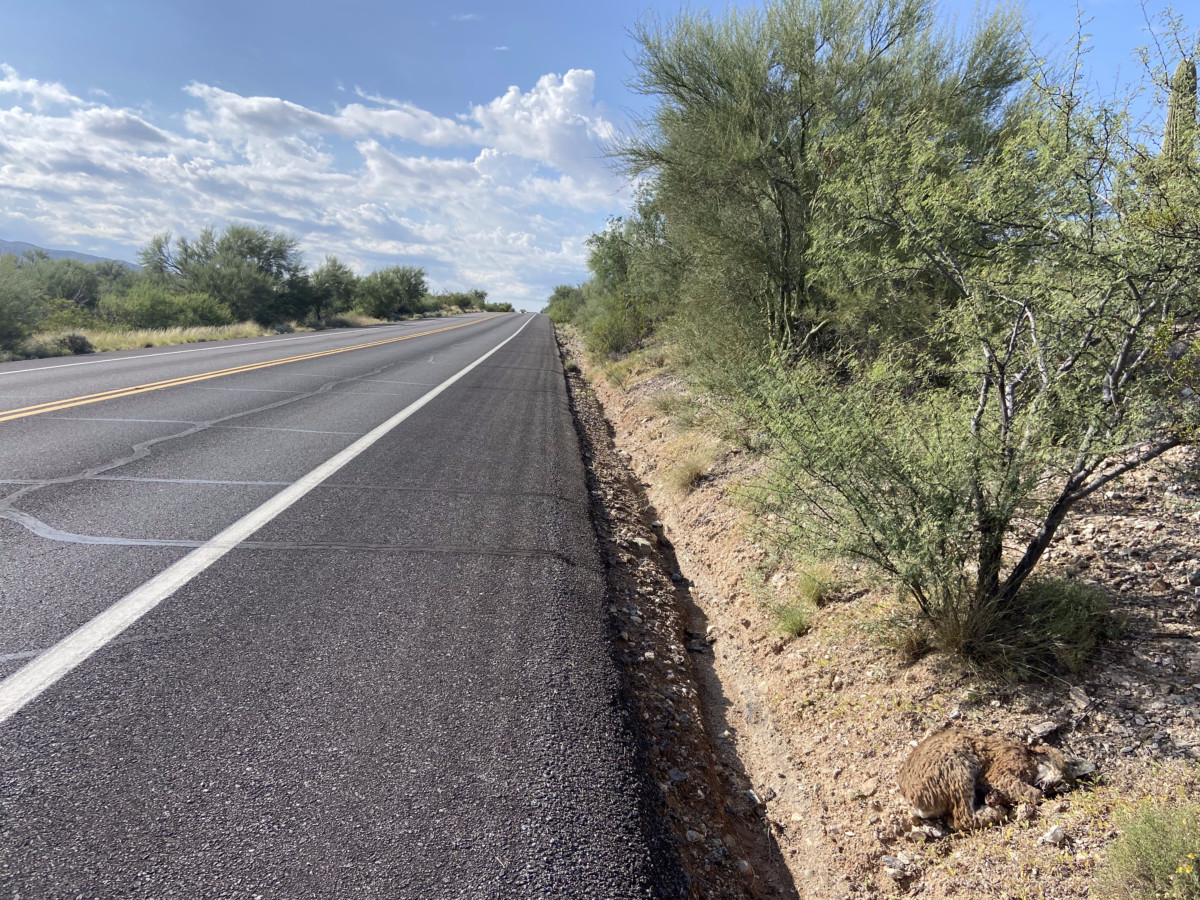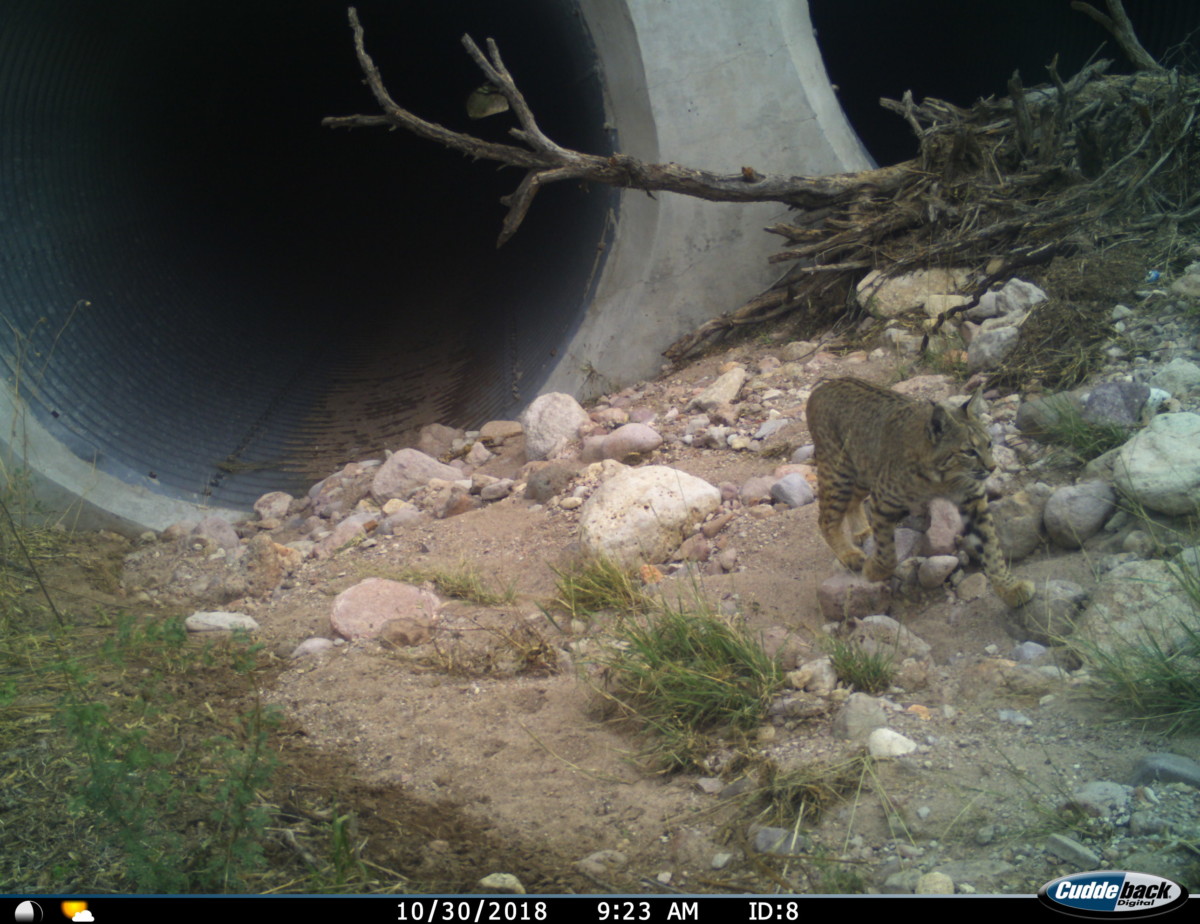We believe in a world where iconic wild cats thrive, a world where park staff and local communities are united and provide safe passage for wildlife across public lands and private ranches in Northern Mexico and Southern Arizona.
Since we hope to achieve this vision through our 1,000 Cats Project, we are launching this series of tips to help you protect bobcat, mountain lion, jaguar, and ocelot — as well as other wildlife — in your own backyard.
[Tips for Protecting Wild Cats #1: Say No to Using Rat Poison]
Tip #2: Drive carefully at night and advocate to make roads safer for wild cats.
Road mortalities are one of the leading causes of human-caused death in wildlife. This is equally true for our wildcats, especially for the smaller, more common bobcat. Roads cut across the region in an endless web, making it almost impossible for a bobcat not to cross a road at some point in its life to access food, mates, and shelter.
Night (dusk and after) is when most mortalities occur on roads and highways. Cats are nocturnal and active at night; they use this time to hunt and patrol their territory. Unfortunately, this is also when it’s hardest to see animals on the road.

Caption: A dead bobcat on Freeman Road on the border of Saguaro National Park East. Taken by Emily Burns.
While we can’t teach bobcats how to look both ways before crossing, there are several measures drivers in any kind of motorized vehicle can take to help limit the number of future wildlife mortalities.
Use these methods when driving at night or on rural roads:
Go the speed limit! It can be hard to slow down on long, dark roads in the middle of nowhere, but speeding decreases your chances of seeing an animal. It also gives the driver less time to slow down and the animal less time to avoid the hurtling mass of metal approaching them. Finally, speeding can increase the risk of damage if you do hit wildlife, and it can cause you to lose control of your car (which could be deadly to you as well).
Use your high-beam headlights on rural roads. These lights give you the chance to see animals sooner and from further away, as they can extend your road visibility up to 400 feet at night. Four hundred feet is extra space can save an animal’s life and give you time to slow down and safely avoid them.
Always expect to encounter animals on the roads at night and in rural areas. By knowing there is always the risk of hitting an animal, it can help drivers navigate to their destination safer — and help them stop or avoid the animal sooner.
Advocate for safe wildlife crossings along major roadways:
Contact the Arizona Department of Transportation (ADOT) if there are areas where you are seeing a lot of roadkill.
Roadkill can also be mitigated by creating wildlife friendly passages, such as these:
Wildlife overpasses are a great way to help animals, including wild cats, cross roads. These bridges are built specifically for wildlife and have natural vegetation installed around them to encourage wildlife to move across them instead of across the highway itself.
Wildlife underpasses—like drainage culverts and under bridges—are already used by many animals, but they can be made more accessible by creating larger openings and clearing any obstructions that might limit passage through them.

Caption: A bobcat safely crossing under I-17 using a large draining structure.
Fencing might seem counterintuitive to protect wild cats, but adding fencing along busy roads actually helps funnel animals in to areas that are safer to cross. Fencing is required for both over- and underpasses for them to work effectively. Wildlife fencing needs to be secure and tall enough, however, to redirect the animal and deter them from just leaping over instead.
If you’re interested in learning more:
Explore ADOT’s measures to protect wildlife, install fencing, and create safe passages across roads.
